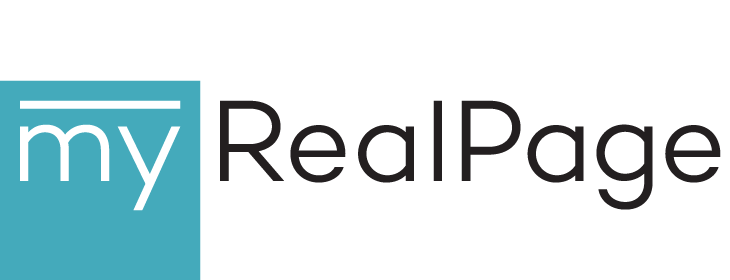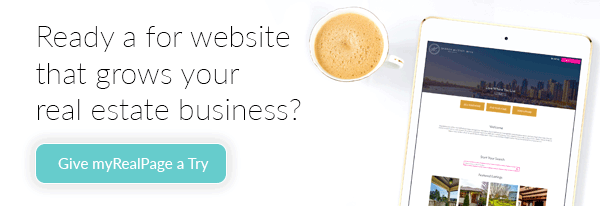More Opens, More Clicks: Tips For Better Real Estate Email Newsletters

Real estate email newsletters can be a powerful marketing tool for building a pipeline of leads, developing trust and strengthening your reputation.
But they take time and work to produce. If you’re going to make the effort, then the newsletter needs to deliver.
If you’re struggling to see results from your real estate email marketing, it’s time to hit the reset button.
For more opens and more clicks, try these tips for better real estate email newsletters.
Set Expectations (and Deliver)
When we don’t get what we signed up for, we usually back out.
We also back out when we sign up for something not knowing what we’re in for — and then discover we don’t like what we’re given.
This applies to memberships, jobs, software, relationships, and yes, newsletters.
If you’re seeing a high rate of unsubscribes, it’s time to revisit the point of sign-up.
Take a look at the newsletter sign-up page on your real estate website. That custom website page should give potential subscribers a clear understanding of your real estate email newsletter: why they should be interested, what it will include and how often they will receive it.
Some sign-up pages even offer a look at a previous newsletter, so subscribers can gauge whether the content is of interest.
Then, of course, you need to fulfill the promises made. Your newsletter should contain the kind of content you described, and it should arrive at the frequency you outlined.
Not providing enough information about your newsletter at the time of sign-up can cause low sign-ups. A mismatch between expectations and reality can be the cause of unsubscribes.

More Value, Less Promotion
Yes, a real estate email newsletter is a marketing tool. But it’s not an advertisement.
It’s a form of content marketing — content that doesn’t explicitly promote something but instead stimulates interest in the product or service behind the content.
If your newsletter is constantly spewing your sales stats and testimonials, it’s time to scale back and revisit the balance of valuable versus promotional content. The most effective newsletters are almost entirely made up of the former.
What is valuable content? It’s “news you can use.” In other words, information that’s actually useful (or inspiring, interesting, funny or otherwise engaging) to your recipients.
Examples of valuable content for real estate email newsletters include:
- Listings, especially sneak peeks or “best of the week” listings;
- Educational content on your real estate blog (e.g., tips for buyers and sellers and neighbourhood guides);
- Sold data;
- Market statistics, with context;
- Community events, updates and reminders (e.g., special garbage pickup dates, festivals and road closures);
- Local business news and spotlights; and
- Discounts, freebies and giveaways.
A mix of the above content should form the bulk of your newsletter.

Simplify Content and Design
It’s tempting to load up your newsletter with content and dress it up with snazzy graphics.
Don’t do it. Contrary to what you might think, simpler is better.
Visual overwhelm discourages recipients from actually engaging with the email once they’ve opened it. When the design is simple — plenty of white space, uncluttered layouts and a balance of imagery and text — recipients are more inclined to read.
To get set up for success, you might want to consider hiring a designer to create a few templates for you to work from.
Similarly, if you pack your real estate email newsletter with too much content, recipients may be more likely to quickly scan the screen than they are to actually click an article or follow a call-to-action.
Establishing a regular content mix can help you keep each newsletter focused and streamlined. Maybe it’s a bit of introductory copy at the top, followed by a featured blog post, a news article, a listing of the week, a local event listing and a funny Instagram post or real estate meme.
Spend Time on Subject Lines
The importance of subject lines cannot be overstated.
Even if you’ve nailed the first three tips on this list, it can all come undone with an ineffective subject line.
Bad subject lines = fewer opens = fewer clicks = unsuccessful newsletter.
Writing effective real estate subject lines takes research and practice. While there’s not one magic formula, the best subject lines are:
- Pretty short. This is so that they don’t get cut off when someone is looking at their inbox on their phone (which most people do).
- Engaging. They make you curious, they make you laugh, or they offer you something you can’t resist.
- Simple and clear. Complicated jokes, big words, fancy prose, too much mystery… they ruin subject lines. Simple is best.
- Honest. Trying to tempt someone to open an email with an inflated promise or offer is bad practice.
The takeaway here is to spend time writing your subject lines. Research subject line best practices. Try writing several variations for each newsletter. Use subject line testers (there are plenty of free ones) to gauge effectiveness and to preview what a subject line will look like in someone’s inbox.
Pay attention to what types of subject lines get you better results. Analyze each and every subject line you use. More on this next.
Test, Test, Test
Perhaps the most crucial step in creating better real estate email newsletters: test everything.
- Run A/B tests for subject lines
- Try different templates
- Change up your context mix
- Play around with sending your newsletter at different times
- Write different headlines for the same content
- Use different images for the same content
Experimenting and later analyzing and comparing results is key to unlocking newsletter success. You’ll likely start to notice some trends and patterns that you can adopt as best practices.Just don’t rest on your laurels. What works best a few times may not be the case every time — keep a close eye on your results (open rate, click-through rate, etcetera) after every deployment.


